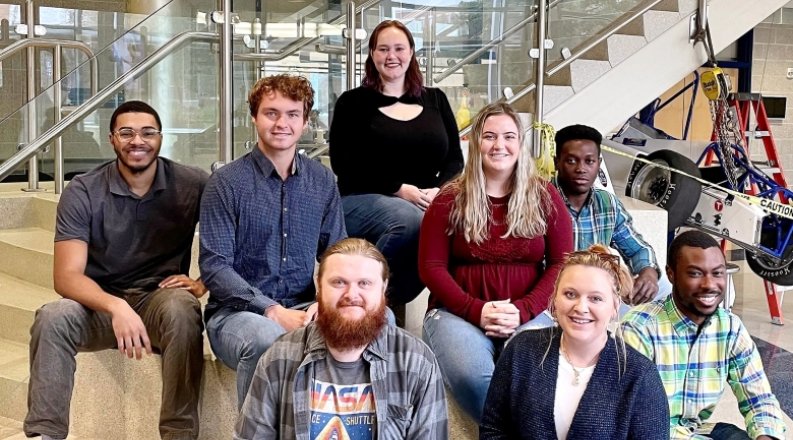An interdisciplinary team of students from the Batten College of Engineering and Technology designed and built a tiny additive manufacturing device that will 3D print an object while launching into suborbital space on a Terrier-Improved Orion sounding rocket.
"If this is successful it could help revolutionize the space industry," said team member Makenna Landon. "They have additive manufacturing printers on the International Space Station (ISS), but not ones that are made to print in more turbulent flight patterns. It's much cheaper to fly up raw materials and print parts as you need them and much more expensive to fly up everything you could need."
The 3D printer will be put to the test in June when the rocket launches from NASA's Wallops Island Flight Facility. Shortly after the launch, and before leaving the atmosphere, the 4.5-inch device - secured inside a 10 x 10 inch metal capsule - will print a small wrench. The print must be completed in about 6 minutes.
The RockSat-C program-based senior design team's biggest challenge so far has been trying to account for spin - the rocket will be spinning at 6 revolutions per second. "Until we start testing, it's difficult to predict just how that will impact the molten PLA (polylactic acid used in 3D printing) and what that could do to our belts that move everything into proper places," Landon said.
The ten-member team is building upon lessons from a similar project in 2022. That team's print was unsuccessful. "Now, we have a much better understanding of the coding, power draw, and ideal electrical setup for our intended deliverables," Landon explained.
The design has changed as well. "While we are still going with a FDM design using PLA, our structure is entirely different," she explained. "To save space, our print bed will move in addition to the print head. Also, we have created a lead screw component for our z axis to eliminate some of the belt tensioning problems that printers can have."
The project has to be completed and shipped to NASA by May. Then, in order to pass clearance for launch, team members will work with Wallops Flight Facility staff to conduct vibration testing.
A successful fundraising campaign helped to pay for students' lodging during the June launch. Most of the team will attend the launch except for those who have already been offered full time jobs. International students on the team will watch the launch from the visitor center.
RockSat-C is a NASA-based program that offers college students the opportunity to fly their experiments on actual sounding rockets launched from the NASA Wallops Island Flight Facility. Some funding is provided by the Virginia Space Grant Foundation.
The team has two advisors, Dimitrie Popescu, professor in the Department of Electrical and Computer Engineering, and Sharan Asundi, assistant professor in the Department of Mechanical and Aerospace Engineering.
"I have been advising the RockSat-C student project for several years, and I am always amazed by the student ingenuity, as well as by their motivation and hard work," said Popescu. "This is a competitive program and being selected for a flight position means that the experiment proposed by students has scientific merit, is safe, and, upon integration and launch at NASA Wallops Flight Facility is expected to be completed successfully."
"To me the RockSat-C project is a thrilling way to get experience in the aerospace industry," said team member Mackenzie Cape. "Not only do we have design control and are able to prioritize what we believe to be important within the constraints given to us, but we also get to actually launch something into space." "How many people get a chance like this?"



